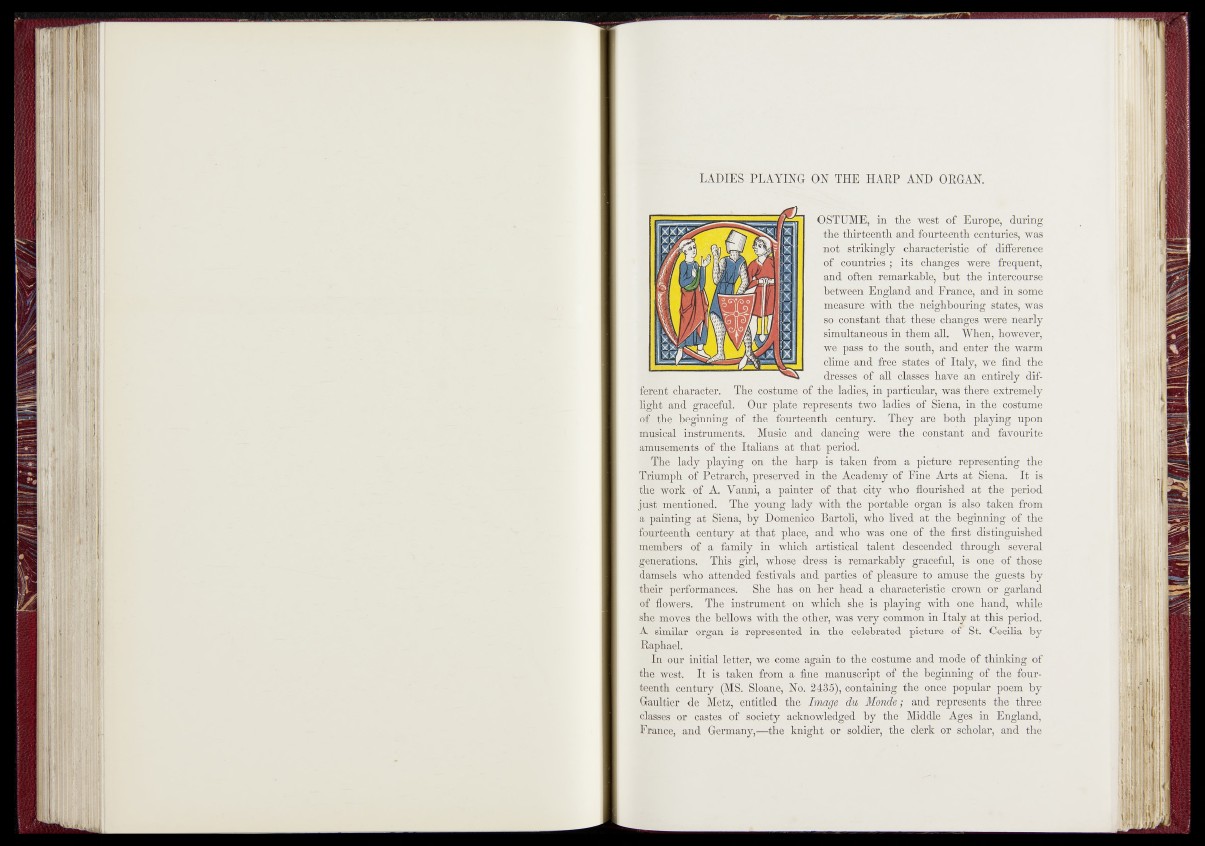
M M phasing: Mr the,,harp and organ.
j ^ west of Europe, during
-mul'Toiirtoenth centuries, was
KS^KH^mCiiiigly characteristic of difference
'ro^courftrio^ 9 its^dHafiges were frequent,
and often remarkable, but tlie intercourse
l i i urvpr n ^ d - and France,, and in some
pSiMiasrprc with IjRaB^^lSBpiirkig states, was
nearly
K^i'iSii*®^ou®in^l*ih all. When, however,
■^ ^ ^ « a k i t f o l o d * enter-sthe warm
Hfmic^and' Jr® ■Istittcs of|Minly,:j\~e find tlie
[!kdfyvsses of | | j t.f^es/liifvc' an (en£frcl$idif-
f^entfo'harac ter. The cogtd^® of the ladies, i 1 ftphratMlar-1j\ as tl 1 ere',extreme! y
l>^m»and(f^.ic?ful^Our plju^rejjc^nfs h\ o pf%S]cn,a; in jtEd'-costume
'wBitihftg humc^r^^@wnl<iirfoiirt(H nth J entiTr) ^ dfotir'kpl.n mg upon
rSutical ir&trjnnients/f favourite
fhe'^ Italians at tn&t period., *
■w < 4 g® g playing ori^fflcdiarp is tahtai f^ fj^ iM M€l^A^r1>r^]inting the
Triumph of’Petrarch, 'preserved -in 'th ^ ^ r^Tl&nbylrpM1«tiTe Arts at ^iensljMt" is
i^^gwork-of>,A. Vanni, a paini r >1 ihu i‘ii iQsOAJ^l1**1 11 *1‘ 1’ nml
Tins young lady witlu-the5 ipo^ahl'e'^^^^^® also taken from
Siena, by Domenico Bartoli, »S00ph\£d at the Jbtgnimng of flit
fourteenth' century at that place, and who; Wiis^ctfregof »fife first' distinguished
mepibe^s of a family in which ^ir5bi^7i$d4|@1^®^l^p)TiM^^th'rbugh1'' several
^Sferations. This girl, whose, dress is' remarkably ^IfetefuL ?^p6ne^ of those
Jlpsels wbo attended festivals and parties 3f -pleasure to amuse tbe, guests by
their performances. She bas on 4tbif Rea'd’ a garland
qftjflowers. Tbe instrument on whi&Bvshe is playing ,withi^ffl hand, while
shf|m6ves the bellows with tbe other4, was very com ^ K'in Itab* at this period.
A similar organ is represented,;^ the' celebrated, picture oi St. Cecilia by
Raphael.
, In our Initial letter, we come again to |&fevcostume and mode of thinking of
the west. It is taken from a fipeMuanuscript of .the beginning of* the fourteenth
century (MS. Sld&nh,JSTo, 2435-), containing the pffee popular poem by
Gaultier de Metz, entitled tbe Image du Monde; and represents the three
classes or castes of society acknowledged by the Middle Ages \ipr England,
France, and Germany,-—the, knight or soldier, the clerk or scholar, and the